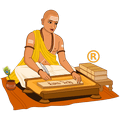























Sunrise07:06 AM
Sunset05:50 PM
Moonrise05:23 PM
Moonset07:02 AM, Jan 20
Shaka Samvat-2103 Yuva
Vikram Samvat-1968 Plava
Gujarati Samvat-1968 Sarvajit
Amanta MonthPhalguna
Purnimanta MonthPhalguna
WeekdaySomawara
PakshaShukla Paksha
TithiChaturdashi upto 08:29 AM
TithiPurnima upto 04:42 AM, Jan 20
NakshatraPurva Phalguni upto 08:01 PM
YogaShula upto 10:15 PM
KaranaVanija upto 08:29 AM
KaranaVishti upto 06:37 PM
KaranaBava upto 04:42 AM, Jan 20
Pravishte/Gate3
MoonsignSimha upto 01:16 AM, Jan 20
Rahu Kalam08:26 AM to 09:47 AM
Gulikai Kalam01:48 PM to 03:09 PM
Yamaganda11:07 AM to 12:28 PM
Abhijit12:06 PM to 12:49 PM
Dur Muhurtam12:49 PM to 01:32 PM
Dur Muhurtam02:58 PM to 03:41 PM
Amrit Kalam02:24 PM to 03:48 PM
Varjyam02:18 AM, Jan 20 to 03:42 AM, Jan 20
Notes: All timings are represented in 12-hour notation in local time of Samastipur, India with DST adjustment (if applicable).
Hours which are past midnight are suffixed with next day date. In Panchang day starts and ends with sunrise.


 Vrishchika
Vrishchika Anuradha 22:42
Anuradha 22:42

 Vrishchika 22:45
Vrishchika 22:45 Jyeshtha 22:45
Jyeshtha 22:45

 Dhanu
Dhanu Mula 23:20
Mula 23:20

 Makara
Makara U Ashadha 25:51+
U Ashadha 25:51+

 Makara 16:42
Makara 16:42 Dhanishtha 29:48+
Dhanishtha 29:48+

 Meena
Meena U Bhadrapada 13:51
U Bhadrapada 13:51

 Meena 16:55
Meena 16:55 Revati 16:55
Revati 16:55

 Mesha
Mesha Ashwini 19:59
Ashwini 19:59

 Mesha 29:33+
Mesha 29:33+ Bharani 22:53
Bharani 22:53

 Vrishabha
Vrishabha Krittika 25:25+
Krittika 25:25+

 Vrishabha
Vrishabha Rohini 27:24+
Rohini 27:24+

 Vrishabha 16:08
Vrishabha 16:08 Mrigashira 28:40+
Mrigashira 28:40+

 Mithuna
Mithuna Ardra 29:06+
Ardra 29:06+

 Mithuna 22:51
Mithuna 22:51 Punarvasu 28:40+
Punarvasu 28:40+

 Simha
Simha Magha 22:55
Magha 22:55

 Simha 25:16+
Simha 25:16+ P Phalguni 20:01
P Phalguni 20:01

 Tula 25:10+
Tula 25:10+ Swati 08:39
Swati 08:39

 Dhanu
Dhanu P Ashadha 29:58+
P Ashadha 29:58+

 Dhanu 12:16
Dhanu 12:16 U Ashadha
U Ashadha

 Makara
Makara U Ashadha 07:23
U Ashadha 07:23In Hindu Calendar, the day starts with local sunrise and ends with next day local sunrise. As sunrise time is different for all cities, Hindu Calendar made for one city is not valid for any other city. Hence it is important to use location based Hindu Calendar, like this website. Further, each Hindu day consists of five elements, which are called angas. These five elements are -
In Hindu Calendar, all five elements together are called Panchang. (In Sanskrit: Panchang = Pancha (five) + Ang (part)). Hence Hindu Calendar which shows all five elements for each day is called Panchang. In South India Panchang is known as Panchangam.
When Hindu Calendar includes Muslims, Sikh, Christian, Buddhist and Jain festivals, including national holidays, it is called as Indian Calendar.